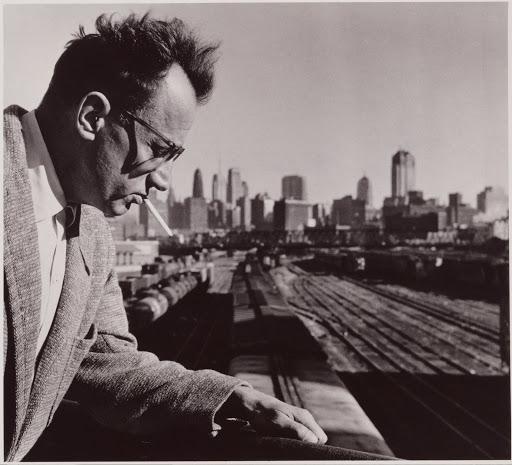A few years ago, I drove the entire length of Illinois Highway 1, from its origins as Halsted Street in Chicago to its terminus at Cave-in-Rock, on the banks of the Ohio River. I took along my copy of the WPA Guide to Illinois, which includes a couple Highway 1 motor tours. The book suggested I stop in St. Anne, a population-1,200 hamlet in Kankakee County, to see St. Anne’s Church, a Gothic structure that rises stone by stone from the prairie, then lifts a weathered copper belfry toward heaven.
According to the guide, the church was built by St. Anne’s French Canadian settlers “to provide parishioners with a counterpart to the shrine at Beaupre, Canada. The shrine is now known throughout the Middle West and several miraculous cures have been reported.”
Without my WPA Guide, I'd have driven right through St. Anne. The book was published in 1939, but remains the essential Illinois travelogue. The Guide has turned me on to the Elgin Observatory, where astronomers kept time for the city’s famous watches; Olcott, the Wheaton manse that headquarters the Theosophical Society of America; and, at the end of my Highway 1 journey, the actual cave in the rock, a hideout for “scoundrels, thieves and counterfeiters” who pirated Ohio River flatboats in the early 19th century.
The Works Progress Administration, which put unemployed Americans to work during the Depression, is best known for building schools and post offices. But the WPA’s mission also extended to starving artists, so it founded a Federal Writers Project to get authors off the dole.
At first, it was suggested the writers be paid to produce novels and short stories, but because so many were communists, there was fear they would turn out “subversive” literature. Finally, a Michigan official suggested tour guides, “a sort of public Baedeker, which would point out to the curious traveler the points of real travel value in each state and county.”
The Federal Writers’ Project produced guides to all 50 states, plus the District of Columbia. None is as well worth reading as Illinois’s, though, because none had such a talented staff. Saul Bellow, Richard Wright, Nelson Algren, and Willard Motley were some of the then-struggling authors recruited for the Illinois project. Bellow’s first job was compiling a list of magazines in the Newberry Library. Finding that task too dull, he was told to write biographies of Midwestern authors. Nelson Algren, who had already published his first novel, Somebody in Boots, wrote a guide to Galena.
Studs Terkel wrote radio scripts on such topics as “Great Artists” and “Legends of Illinois.” Terkel didn’t contribute to Guide, but he considered it the best travelogue ever written on the state.
“There’s folklore, there’s humor, there are places to go,” Terkel told me in 1998, when I was writing a series for the Tribune that followed WPA Guide motor tours through the suburbs to see what still remained. “It holds up. The ones who did the research had humor and intelligence and knew what was important.”
Because the Illinois project was staffed by so many current and future novelists, the Guide’s literary quality is far beyond what you’ll find in a Lonely Planet or Rough Guide. Consider this description of Cairo, which was, even in the 1930s, past its heyday as a river town:
“Cairo is encircled by a huge levee that rises from the river delta like the ramparts of a walled town. Steamboats have whistled for a landing on the Ohio side since the 1840s. But most of the whistles have been stilled by the railroad, and today the levee, its revetted slope scoured clean by the river, has no more than a half-dozen sternwheelers moored along its mile length. The street fronting the levee is lined with hotels, shops and taverns, many of them deserted and falling to ruin, their weathered facades embellished with bracketed cornices, rows of dentils, and balconies of wrought iron…But gentle decay is not all of Cairo.”
As you can see, The WPA Guide to Illinois can’t be improved upon. It can, however, be updated. This may be the time to do it, not just because the book is so old, but because the conditions that led to its creation have returned. A lot of writers have been collecting Pandemic Unemployment Assistance. Why not give them something productive to do, especially now that the $600-a-week federal bonus has expired?
As John Warner wrote in the Tribune last month, the COVID-19 pandemic is threatening to extinguish emerging literary careers. A new Federal Writers’ Project could save them.
“A career in the arts should not be exclusively reserved for those who break through to fame and fortune,” wrote Warner. “It should also not be the sole province of those who come from sufficient wealth to persevere through the lean times… Arts are infrastructure, as surely as roads, schools and hospitals are. They make life meaningful. They enrich our existence. They deserve our support.”
We may get more than a guidebook out of it, too. Richard Wright used his free time on the project to start writing Native Son.





Comments are closed.